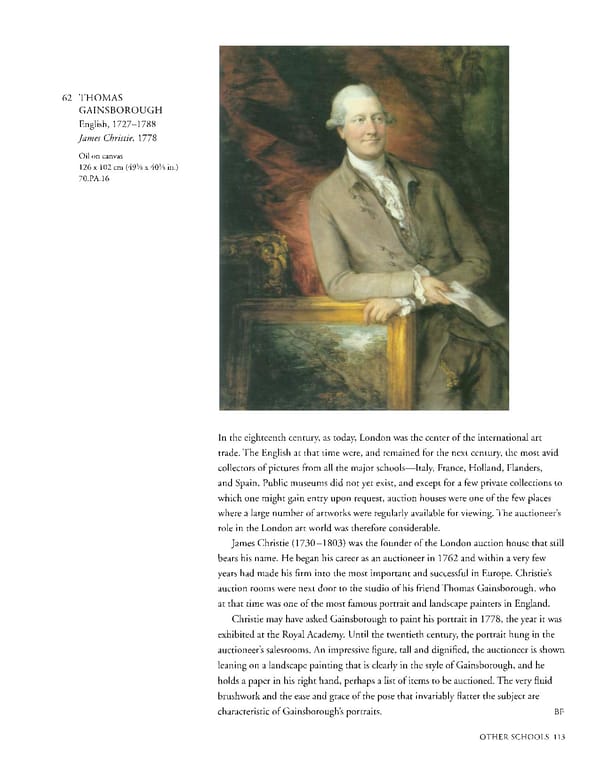62 THOMAS GAINSBOROUGH English, 17271788 James Christie, 1778 Oil on canvas 126 x 102 cm (49 x 40 in.) 70.PA.16 In the eighteenth century, as today, London was the center of the international art trade. The English at that time were, and remained for the next century, the most avid collectors of pictures from all the major schools—Italy, France, Holland, Flanders, and Spain. Public museums did not yet exist, and except for a few private collections to which one might gain entry upon request, auction houses were one of the few places where a large number of artworks were regularly available for viewing. The auctioneer's role in the London art world was therefore considerable. James Christie (1730—1803) was the founder of the London auction house that still bears his name. He began his career as an auctioneer in 1762 and within a very few years had made his firm into the most important and successful in Europe. Christie's auction rooms were next door to the studio of his friend Thomas Gainsborough, who at that time was one of the most famous portrait and landscape painters in England. Christie may have asked Gainsborough to paint his portrait in 1778, the year it was exhibited at the Royal Academy. Until the twentieth century, the portrait hung in the auctioneer's salesrooms. An impressive figure, tall and dignified, the auctioneer is shown leaning on a landscape painting that is clearly in the style of Gainsborough, and he holds a paper in his right hand, perhaps a list of items to be auctioned. The very fluid brushwork and the ease and grace of the pose that invariably flatter the subject are characteristic of Gainsborough's portraits. BF OTHER SCHOOLS 113
 Masterpieces of the Getty Museum: Paintings Page 113 Page 115
Masterpieces of the Getty Museum: Paintings Page 113 Page 115